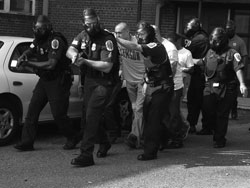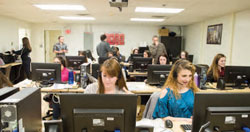In the wake of a devastating amount of recent mass shootings throughout the U.S. and abroad, many are questioning whether these types of incidents are on the rise. Still reeling from losses in places such as Newtown, CT., the Navy Yard in Washington, DC., and Aurora, CO., Americans are beginning to question their safety.
According to the FBI’s website, a mass murder is defined as four or more murders with no “cooling-off” period in between. A mass murder typically occurs in a single location where a number of victims are killed by one individual or more.
According to the Congressional Research Service (CRS), there have been an estimated 78 public mass shootings in the United States since 1983. Mass shootings have occurred at an average rate of one per month since 2009.
However, the FBI website explains that mass shootings are a small portion of overall gun related deaths. In 2010, around 8,775 people were murdered with firearms in the United States and less than one percent of those victims were killed in mass shootings.
Following the Newtown, CT. tragedy, a handful of states including Connecticut, New York, and Maryland have expanded their bans on assault weapons. Also, at least 17 other state legislatures have moved towards tightening gun-control laws in an effort to prevent such atrocities.
Despite local and federal efforts to curb the use of guns, 12 people were killed and eight others were injured in a mass shooting at the Washington Navy Yard on Sept. 16. This incident marked the fifth mass shooting in the U.S. this year, an article from theExaminerexplains.
Homeland Security Professor John Comiskey of the Criminal Justice Department said, “Mass shootings are no more common than they have been in past decades, despite the impression given by the media.”
While many media organizations continue debating whether or not mass shooting events are actually rising, Comiskey said, “There have been a small number of high-profile active shooters as of late, but there is no rise in mass shootings in our country.”
Comiskey, a retired New York City Police Lieutenant, explained that many of the recent shootings in our nation can be considered “Columbine-like” in that they have similarities to the 1999 Columbine High School massacre where two active shooters killed 12 fellow students and one teacher.
Many lessons learned from the Columbine incident have caused law enforcement to intently discuss how to deal with active-shooter type situations, Comiskey explained. In these types of situations, law enforcement often takes affirmative action in taking down an active shooter.
Comiskey also discussed how this month’s Nairobi Mall shooting in Kenya brings up U.S. Homeland Security concerns that copycat groups or lone terrorists could recognize the efficiency of such an attack here in America.
“With Black Friday coming soon, this will be a concern for U.S. merchants. Private security and police will most definitely step up in the wake of Nariobi,” he said.
“We might soon see a call for arming security guards and a definite increase in security for large events like the upcoming NYC Marathon and 2013 Superbowl,” Comiskey explained.
University Police Chief, Bill McElrath gave some insight as to how the University could take action if faced with an active-shooter situation. He said, “I think the first step to preventing something like this from happening on our campus is to acknowledge the possibility that it can take place here.”
He explained that the University Police have many policies for responding to an active shooter incident. “The MUPD have conducted numerous drills; both live exercises and tabletop exercises, on how best to respond. We have policies on Emergency Notification to the campus, as well as Lockdown Policies,” he said.
Junior political science major Dan Roman said, “As an Resident Assistant I have gone through countless hours of training in case of an active shooter on campus.”
He continued, “I think that MUPD and the University as a whole have done an incredible job reaching out to students and providing the possible lifesaving information. Monmouth makes sure it places the safety of students before anything else and I feel extremely safe here on campus.”
When faced with a mass shooting of any severity, the first question asked by thousands, involved or not, is why?
“It is tempting to look for the reason why people commit extreme violent acts like mass shootings – we want to blame it on something, whether it be mental illness, extremist ideologies, histories of victimization, playing violent video games, or simply some innate evil in the perpetrator,” Dr. Jamie Goodwin of the Psychology Department said.
However, she continued, “In truth, it is likely a futile effort to find one factor to blame.” According to Goodwin, the reasons may be complex.
Goodwin said “The vast majority of people who suffer from mental illness are not violent or dangerous, but there are some symptoms of mental disorders that could potentially add fuel to aggressive urges that lead to mass shootings.”
She continued, “Psychotic symptoms such as delusions (like those purported to have driven the Navy Yard shooter) may cause a person to feel persecuted or attacked, so the shooting is perceived as retaliatory or self-defensive.”
Goodwin described that depressive symptoms may cause a sense of hopelessness that makes the shooting feel like the only option for retribution or restoring a sense of power in the person’s life.
Unfortunately, there is not one answer as to why a perpetrator would engage in a mass shooting, although local, state and federal officials, as well as the victims involved, continue to seek answers.
PHOTO TAKEN from gazett.net



